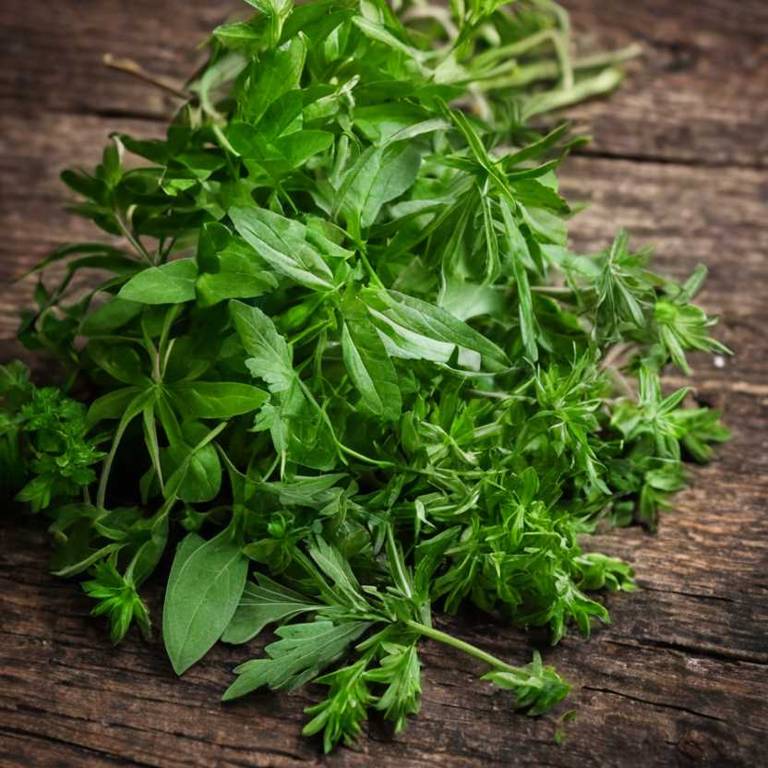By Leen Randell
Updated: Jul 21, 2024
10 Medicinal Constituents Of Lemna Minor (Duckweed)

Lemna minor has active constituents such as flavonoids, alkaloids, and saponins.
These compounds are credited with antimicrobial, anti-inflammatory, and antioxidant properties, which can help prevent infections and alleviate conditions like eczema and acne.
Moreover, the antioxidants in duckweed may also reduce the risk of age-related diseases like cancer and Alzheimer's, thereby improving overall health and quality of life.
This article explains in details the 10 best active constituents of Lemna minor.
1. Catechin
Lemna minor catechin is a type of flavonoid found in its leaves.
This antioxidant-rich compound has been shown to exhibit various biological activities, including anti-inflammatory and antimicrobial properties. Studies have demonstrated that Lemna minor catechin can inhibit the growth of certain bacteria and viruses, making it a promising agent for developing novel antimicrobial therapies.
Additionally, its antioxidant capabilities may help protect against oxidative stress and cell damage.
2. Quercetin
Lemna minor quercetin is a flavonoid compound found in its leaves.
It exhibits various biological activities, including anti-inflammatory, antioxidant, and antibacterial properties. Quercetin has been shown to inhibit the production of pro-inflammatory molecules, making it a potential therapeutic agent for treating chronic diseases such as cardiovascular disease and cancer.
Its unique chemical structure also makes it a natural preservative, with applications in food and pharmaceutical industries.
3. Kaempferol
Lemna minor kaempferol is a flavonoid compound that has been isolated from the aquatic plant.
It exhibits antioxidant and anti-inflammatory activities, which may contribute to its potential health benefits. Kaempferol has been shown to inhibit the growth of cancer cells and improve cardiovascular health by reducing oxidative stress and inflammation.
Further research is needed to fully understand its effects on human health.
4. Gallic acid
Lemna minor gallic acid is a phenolic compound extracted from the plant's leaves.
It has been shown to exhibit various biological activities, including antioxidant, antimicrobial, and anti-inflammatory properties. Studies have demonstrated its potential use in traditional medicine, particularly for treating skin and respiratory disorders.
Additionally, gallic acid has been investigated as a natural preservative and food additive due to its ability to inhibit the growth of microorganisms.
5. Ellagic acid
Lemna minor ellagic acid is a polyphenolic compound found in its leaves.
This antioxidant has been extensively studied for its potential health benefits, including anti-inflammatory and antimicrobial properties. Ellagic acid has been shown to exhibit cytotoxic activity against various types of cancer cells, making it a promising candidate for the development of new cancer treatments.
Additionally, it may help protect against oxidative stress and cellular damage caused by free radicals.
6. Ferulic acid
Lemna minor ferulic acid is a unique compound found in this aquatic plant.
Ferulic acid has been extensively studied for its potential health benefits and antioxidant properties. It has been shown to exhibit anti-inflammatory and antimicrobial activities, making it a promising natural remedy for various diseases.
Additionally, studies have demonstrated its ability to inhibit the growth of certain cancer cells, offering potential therapeutic applications.
7. Ursolic acid
Lemna minor ursolic acid is a triterpenoid compound isolated from the aquatic plant.
It has been found to possess various biological activities, including anti-inflammatory, antioxidant, and antibacterial properties. Ursolic acid has been shown to inhibit the growth of certain cancer cells, making it a potential candidate for the treatment of cancer.
Additionally, it may also have beneficial effects on cardiovascular health by reducing cholesterol levels and blood pressure.
8. Oleanolic acid
Lemna minor oleanolic acid is a bioactive triterpenoid compound isolated from the plant's leaves.
It has been extensively studied for its potential health benefits, including anti-inflammatory and antioxidant activities. Oleanolic acid has been shown to exhibit cytotoxicity against various cancer cell lines, as well as exhibiting antimicrobial and antiviral properties.
Its unique chemical structure makes it a promising natural compound for the development of new therapeutic agents.
9. Beta-sitosterol
Lemna minor beta-sitosterol is a type of phytosterol that is found in its seeds.
It is a naturally occurring compound that has been shown to have various health benefits, including reducing cholesterol levels and improving liver function. Additionally, beta-sitosterol has anti-inflammatory properties, making it a potential treatment for conditions such as arthritis.
Further research is needed to fully understand the effects of Lemna minor's beta-sitosterol on human health.
10. Campesterol
Lemna minor campesterol is a sterol that plays a crucial role in its biology.
It is a cholesterol-like molecule found in high concentrations in the lipid bodies of L. minor cells.
Campesterol has been shown to be involved in the regulation of cell growth and differentiation, and may play a role in the plant's ability to adapt to changing environments.